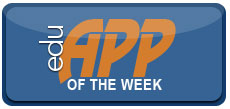Giving your students PowerPoint slides with only text or graphics is a problem because slides, even with text and graphics on them, really do not stand alone. It’s hard to add enough context without adding tons of text to explain what’s on the slide. And, well, PowerPoint isn’t really the right media for tons of text. If you want students to do a lot of reading, you really should provide students with printed or downloadable print materials.
Read more ›CURRENT ARTICLE • April 19
OTHER RECENT ARTICLES
 In the now classic article Confidence in the Classroom: Ten Maxims for New Teachers, author Jim Eison offers priceless advice for new teachers. Over the years, I have given hundreds of copies of this article to new and not-so-new faculty. Even though it was published more than 20 years ago, it still deserves a place in your collection of indispensible articles on college teaching.
In the now classic article Confidence in the Classroom: Ten Maxims for New Teachers, author Jim Eison offers priceless advice for new teachers. Over the years, I have given hundreds of copies of this article to new and not-so-new faculty. Even though it was published more than 20 years ago, it still deserves a place in your collection of indispensible articles on college teaching.
The elderly shop owner opposes a corporation that wants to build a plant in her town. She’s afraid that its products, similar to the ones she manufactures, will drive her out of business. At 70, it’s too late in her life to start over and, even though the corporation says it will hire locally, she doubts it will hire someone her age. Besides, after a lifetime of running her own business, she doesn’t want to work for someone else. How can she convince her fellow townspeople to rally against the corporation?
Read More ›Much has been written about the course syllabus. It’s an important tool for classroom management, for setting the tone, for outlining expectations, and for meeting department and university requirements. It’s an essential document in a higher education course, but do your students read it? And if they do read it, do they see the real purpose of the course beyond the attendance policy and exam dates?
Read More ›For the past three years I have directed a small program that has produced big results at Tusculum College. For as little as $3,000 per year, our college has increased its sense of campus community, helped with current faculty development, more quickly integrated new faculty, and modeled scholarly discussions for students. Officially the program goes by the name “The Teaching and Learning Initiative,” but it has acquired the nickname “teaching circles.”
Read More ›In a recent study, a group of 120 undergraduates were asked what percentage of a grade should be based on performance and what percentage on effort. The students said that 61% of the grade should be based on performance and 39% on effort.
Read More ›Communicating in an online environment, especially within the confines of an institution’s learning management system (LMS) and an academic budget, often poses a challenge to even the most well-intentioned instructors. Many times we find ourselves constrained not by our imaginations or abilities but by the technological tools we have at our disposal. Given the systems in which we work, how do we select the best technological tool—the best medium—to communicate a message? One framework for answering these questions is through the lens of Media Richness Theory (MRT).
Read More ›Let’s see a show of hands by those who work at institutions that have developed a comprehensive risk management plan related to service learning and civic engagement. Keep your hand up if you can quickly locate a copy of that plan. And keep your hand up still if you’ve attended a formal training session regarding the risk management plan. Anyone?
Read More ›
|
Idea Sketch, as the name implies, is a way to capture ideas and organize them in some hierarchical manner — such as in a concept map or flow chart. Idea Sketch is a no frills app, rather intuitive, and best of all it is free! There is an upgrade option for $3.99 but if all I am going to get are a few more shapes, colors, and fonts, I am not sure that I would opt for a paid version. The free version, which works on the iPhone and iPad, includes a check spell option when typing but the app does not include a way to spell check the entire work when completed.
Here are some of nice features you will find in this app:
- You can create a map with straight lines, curved lines, or right angles connecting lines with or without directional arrows. This option is available when you create a new map or after creating using the ‘i’ symbol in the menu bar.
- The displayed concept map can be re-arranged by using a two-finger swipe feature—up/down, right or left.
- To move individual shapes, simply press and hold and when the shape is enlarged, then move it to a desired area of the page. The entire map can be moved by holding a blank area of the screen and dragging to a new location.
- Tap the document symbol at the top right to switch from map display to outline format.
- Tap the ‘+’ sign to add shapes and the ‘Ideas’ (top left of menu) to add a new file. Importing and sharing is easy and so is the help section.
Summary:
Get Idea Sketch app if you are looking for a basic concept map that is easy to use when you need to brainstorm and if you like free apps. The undo feature is nice but there is no redo option. Idea Sketch has the basic action and decision symbols. Adding a new child (idea bubble or box), notes and shapes is easy, and switching between outline and map view is a breeze. Other similar available apps are: iThoughtsHD (mind mapping ($9.99); Maptini ($5.99); Simplemind (free) and Mindo ($6.99). Idea Sketch will do the job of organizing your thoughts into maps or an outline.
Dave Yearwood, associate professor and chair of the technology department, University of North Dakota.
Read More ›How many times have you provided feedback in the margins of students’ papers, only to find that you’re providing the very same feedback on the next set of papers? As a new faculty member, I was left dumbfounded by this experience. I couldn’t understand why my students continuously made the same errors and why my feedback did not improve their papers. I was also surprised by the number of students who requested meetings to discuss why they felt their papers warranted a higher grade. My colleagues assured me that I wasn’t alone in these experiences, but I knew there had to be alternatives to this unproductive cycle.
Read More ›






